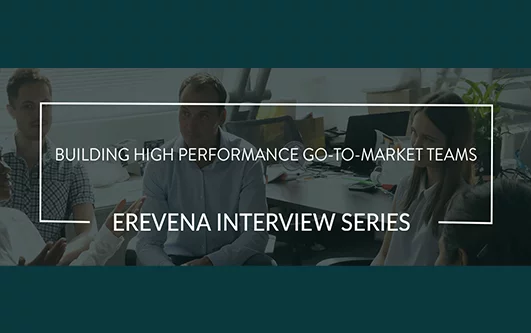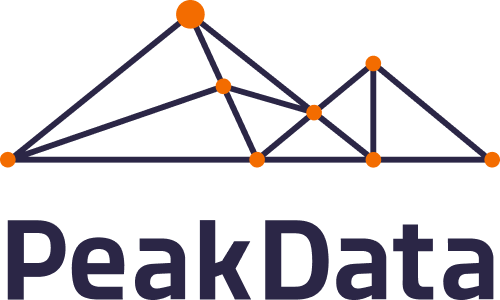Having spearheaded a multi-hire project at his former company Transporeon, Jonathan Wood joined Jedox as its Chief Revenue Officer in September 2021. In the first of two interviews with Erevena’s Chris Batsford, he talks about the challenges and opportunities of building a productive go-to-market team.
What’s your background in building high-performing teams?
I’ve worked in enterprise software and services for just over 20 years at a variety of companies, both large and high growth For example, I was employee number three in a small company that grew into an SAP reseller and then worked for SAP itself for a decade. I’ve also worked for smaller companies that ended up being acquired by the likes of Oracle and going through private equity backed IPOs. I then spent five years at Infor, initially running their services business and then as general manager for India, Middle East and Africa. More recently, I returned to high-growth companies such as private equity backed firm Transporeon where I was brought-in to re-architect their go-to-market (GTM) strategy and set the platform for growth.
Tell us about your remit while at Transporeon
Transporeon provides cloud-based logistics planning software and transport management software. When new investors HG Capital came on board in 2019, they tasked the leadership team with doubling the size of the business in 3-4 years. I was brought in as Chief Revenue Officer to redefine the go-to-market strategy. It was clear from the data we held that we were strong in five or six key industries where there were significant growth opportunities. We built our new GTM strategy around attracting new customers to the Transporeon platform in those industries, while growing our business with existing customers. We took a different approach to achieving this than many other companies might have done.
Can you expand on this ‘different’ approach?
Typically, in go-to-market teams there’s a blurring of lines with people taking responsibility for more than one aspect. It’s not clear to the customer who has ultimate accountability, while internally there’s often no single person with responsibility for key moments in a customer relationship. In our new GTM strategy, we switched to a verticalized industry model and split the teams into those responsible for new business/sales and those for account management of existing customers. These are two very different roles, with the account management people acting as advocates for the organisation, able to talk their customers through what they currently do on the platform and how much more might be possible in support of their KPIs and business challenges.
So, our dual-approach GTM strategy acted firstly as a pull for new customers onto the platform and secondly as an advocate to drive engagement with existing customers. In both instances, many of our target customers were operating with constricted supply chains due to Covid, so our task was to demonstrate the potential of the technology to help them through unprecedented times.
What role did hiring play in delivering this strategy?
When we looked at our total headcount alongside our top line growth plan we realised that we were lacking the ability to scale out this model. For that, you need headcount. You need the right number of people physically located in the right places to build intimacy with customers and to attract new clients. Once we identified where these locations were, we could map out what we needed from a skillset and headcount perspective.
We knew that we had to hire a high volume of people to cover our go-to-market aspirations. Working with our recruitment partner Erevena Growth, we saw this as a massive sales activity, for which we needed a proper candidate pipeline in each target region.
How did you approach this hiring challenge?
We first aligned the number of headcounts with the budget that we had and what we were trying to deliver over the next two to three years. Then, we started a multi-hire project. This demanded a lot of trust on Transporeon’s part in Erevena’s ability to surface the right candidates when we were still building our go-to-market. At the same time, Erevena had to operate with a degree of uncertainty because they weren’t simply matching candidates with job specifications, rather they were hiring in a far more dynamic way, looking at several dimensions.
We needed them to find out who was out there in the markets we served. A potential new hire might be working for a logistics company and have a great deal of industry knowledge but little traditional technology sales expertise. Or they might be someone lacking this industry experience but with core net new sales and customer management expertise who could pick up the solution and become productive in a relative short time.
So, instead of perhaps taking someone with sales skills from a tech company and training them in logistics or supply chain execution, we could take people from logistics and supply chain and build their skills and capability in how to sell a technology platform. Essentially, we were shifting from a search for just core technology skills, to a broader candidate pool of people who could bring translatable skills and experience that would build confidence with our customers.
What does it take to find candidates like this?
You need a partner who is flexible, creative and agile. One who understands that what might have worked for one high-growth tech platform company isn’t necessarily going to work for the next one. Erevena gave us that, along with the confidence to go out into a market that perhaps they didn’t previously have the candidate base in, but one where they could build credibility in new areas.
From an internal perspective, I had to lead this from the front. Having grown fairly consistently year after year for 20 years, the company had never recruited in such high volume and short space of time before. As such, there hadn’t been the experience that scaling out at pace required a really detailed level of engagement. We needed to be creative about the candidates — not all new hires had to look and feel the same as those working for the company at that time! In less than 12 months we had hired over 20 new people into the team, which is no mean feat!
Read the second interview with Jonathan for what happened next.
Share this article:












